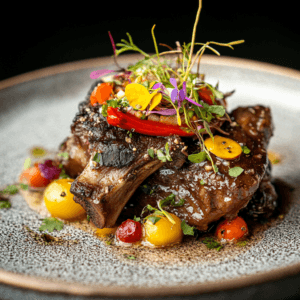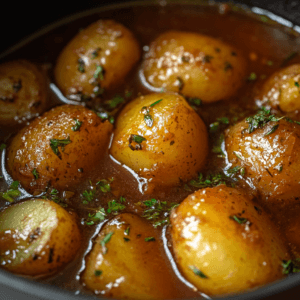Pickled bologna is a deliciously tangy and savory treat that’s been a beloved snack for many years. Whether you’re a fan of the sharp, vinegar-based brine or the distinct texture, this humble dish has earned its place in various culinary traditions. If you’ve never tried it before or want to learn more about how to prepare and enjoy it, this article is the perfect guide for you. We’ll cover everything you need to know about pickled bologna, from its taste and how it’s made, to tips on how to store it and where it’s most popular.
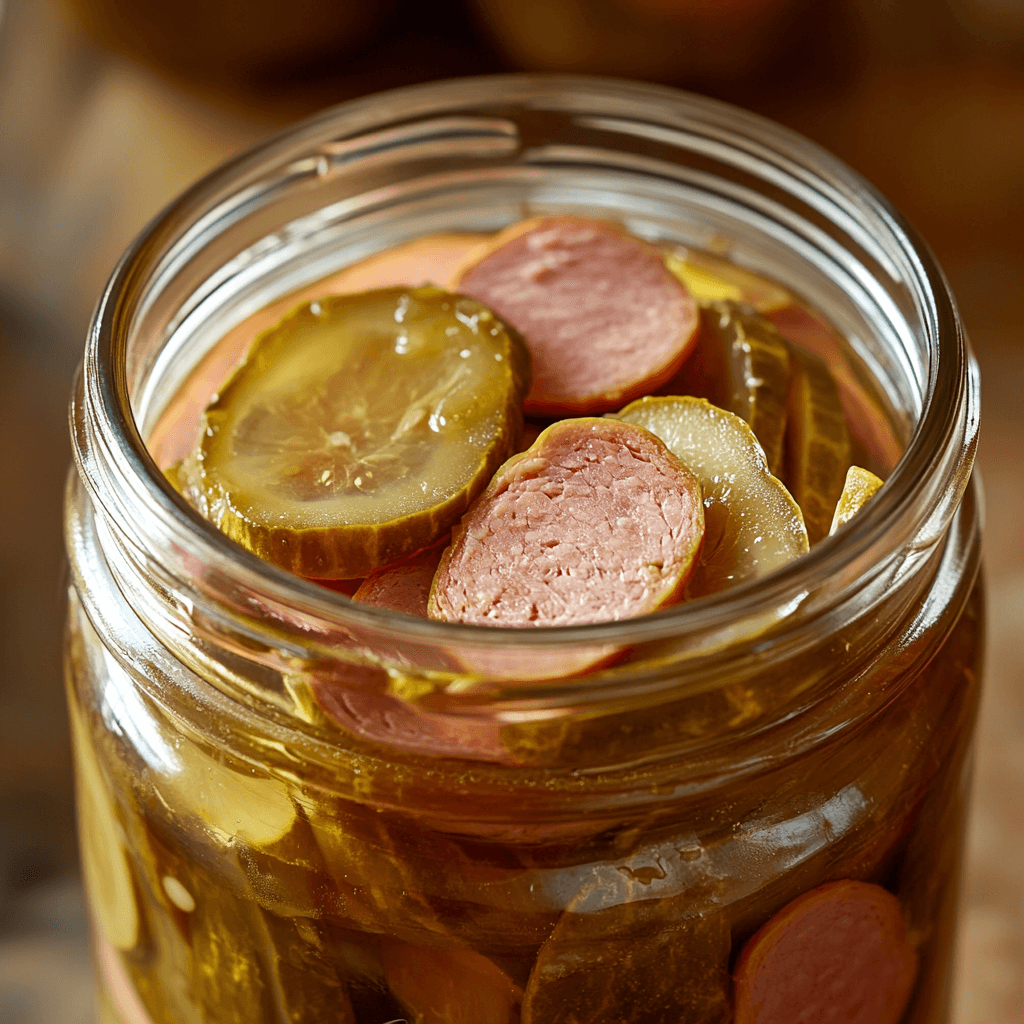
What Does Pickled Bologna Taste Like?
Pickled bologna offers a unique blend of flavors that make it stand out from regular bologna. The most notable feature of pickled bologna is its tanginess, derived from the vinegar used in the brine. This tangy flavor is complemented by the meaty, savory taste of the bologna, which adds richness. For many, the experience of eating pickled bologna is a perfect balance of salty, sour, and spicy.
The Flavor Profile of Pickled Bologna
The vinegar in the brine gives pickled bologna its signature sourness, while a variety of seasonings contribute additional flavor notes. Common spices used in pickling bologna include mustard seeds, garlic, peppercorns, and chili flakes. These spices not only enhance the flavor but also give the bologna a more complex and layered taste. You’ll often find subtle notes of sweetness and spice, depending on the recipe.
Interestingly, the texture of pickled bologna also plays a role in its flavor experience. Regular bologna is soft and smooth, but when pickled, it becomes firmer and slightly chewy. The longer the bologna soaks in the brine, the more pronounced the flavors become, making it a satisfying snack for those who enjoy intense and bold tastes.
Regional Variations in Flavor
Pickled bologna isn’t just a one-flavor wonder. Depending on the region, people might add different spices or ingredients to the brine, resulting in distinct flavor profiles. For instance, in the Midwest, pickled bologna often has a robust flavor with a bit of heat, thanks to the inclusion of chili flakes or hot peppers. In contrast, other areas may prefer a sweeter brine, balancing the tangy vinegar with sugar or honey for a more mellow flavor.
If you want to explore these regional differences, consider trying pickled bologna from different areas and noting the distinct variations. It’s a great way to discover how spices and brine ingredients can completely change the character of this beloved snack.
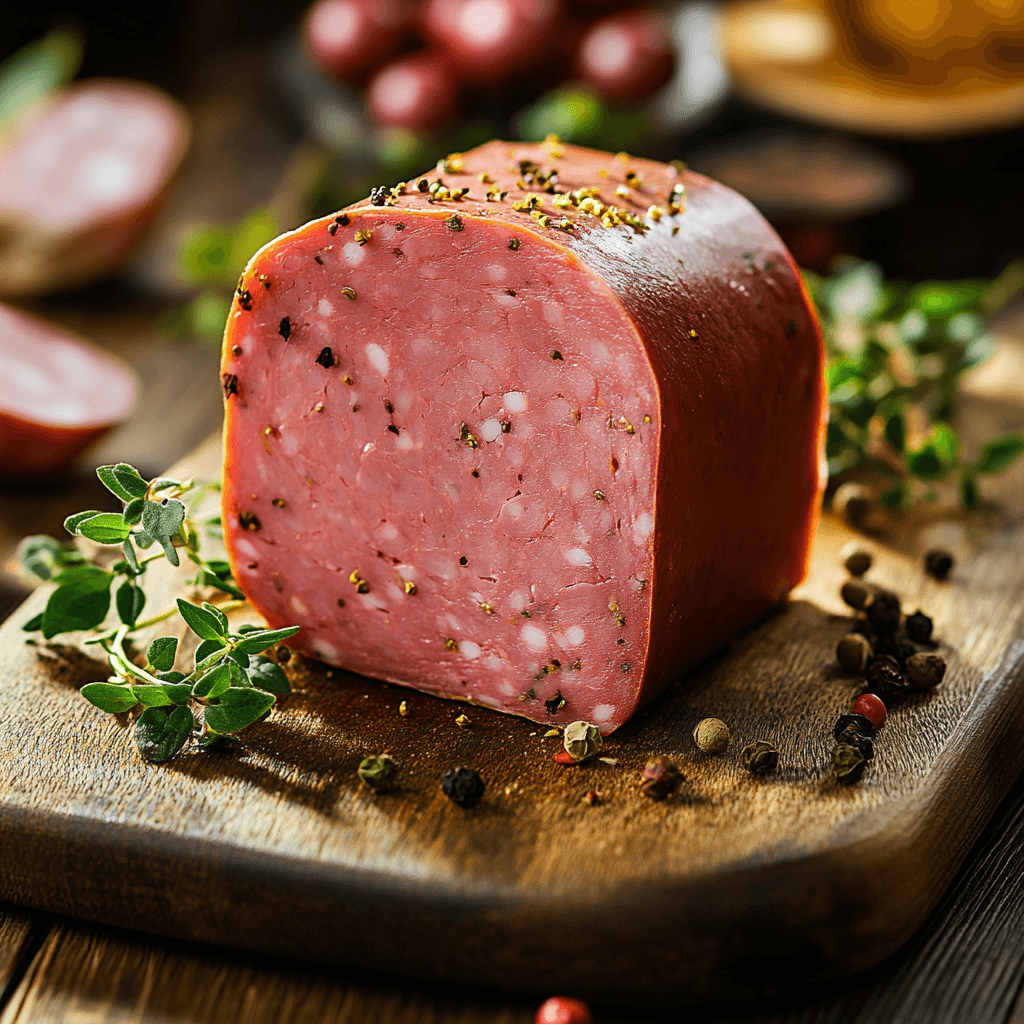
Does Pickled Bologna Need to Be Refrigerated After Opening?
Once you’ve opened a jar of pickled bologna, proper storage is crucial to maintaining its freshness and flavor. Pickled bologna, like any perishable food, should be refrigerated after opening. This helps slow down any bacterial growth and keeps the bologna tasting its best.
Proper Storage Techniques for Pickled Bologna
Refrigeration is essential for pickled bologna to remain safe for consumption. After opening, make sure to securely close the lid of the jar to prevent air and contaminants from entering. Store it in the refrigerator, where it will stay fresh for several weeks. The brine helps preserve the bologna, but the cold temperature of the fridge ensures it remains safe to eat.
Additionally, if you are storing pickled bologna in a homemade jar or container, it’s a good idea to check the bologna occasionally for any signs of spoilage. If you notice changes in the smell, texture, or color, it’s best to discard it. Always use clean utensils when removing bologna from the jar to prevent contamination.
Can You Freeze Pickled Bologna?
While refrigeration is the best option for keeping pickled bologna fresh, freezing is not recommended. Freezing may alter the texture and make the bologna lose its firm, chewy consistency. The brine may also become watery when thawed, which can negatively affect the overall taste. If you need to store it for a longer period, it’s best to keep it refrigerated.
If you’ve made your own pickled bologna at home, and you’re planning to store it for a long time, keep an eye on the expiration date. The pickling process does extend its shelf life, but once opened, the freshness will degrade over time.
How Long Does It Take to Pickle Bologna?
Pickling bologna is a straightforward process, but it does require patience. The time it takes for the bologna to soak in the brine and absorb the flavors can vary, but typically it takes 24 to 48 hours for the flavors to fully infuse the meat. The longer it sits, the more intense the flavors will be, so timing is key to getting the perfect pickle.
The Pickling Process: Step-by-Step
To pickle bologna, you first need to prepare the bologna by slicing it into thick pieces. This allows the brine to penetrate more evenly and lets the bologna absorb the pickling flavors faster. The next step is to prepare the pickling brine, which typically includes vinegar, water, sugar, and spices. Mustard seeds, garlic, peppercorns, and chili flakes are commonly used to give the bologna that signature tangy, spicy kick.
Once the brine is prepared, you simply need to submerge the bologna slices in the jar, making sure they are fully covered by the brine. Seal the jar tightly and refrigerate it for at least 24 hours, although some people prefer to let it sit for 48 hours for deeper flavor. The result is a tasty snack that’s perfect for enjoying on its own or as part of a larger meal.
Factors Affecting Pickling Time
Several factors can influence how quickly bologna will pickle. For example, the thickness of the bologna slices plays a major role in how long it will take for the brine to penetrate. Thicker slices may take longer to pickle, while thinner slices will absorb the flavors more quickly. Additionally, the type of brine you use and the temperature of your refrigerator can also affect pickling time. Colder temperatures can slow down the pickling process, so if you’re in a hurry, you might want to use a warmer spot in the fridge to speed things up.
Pickled bologna is best when it has been given time to soak and develop its full flavor profile. However, even a short soak can still yield delicious results, so don’t be afraid to experiment with different pickling times to find the flavor that suits you best.
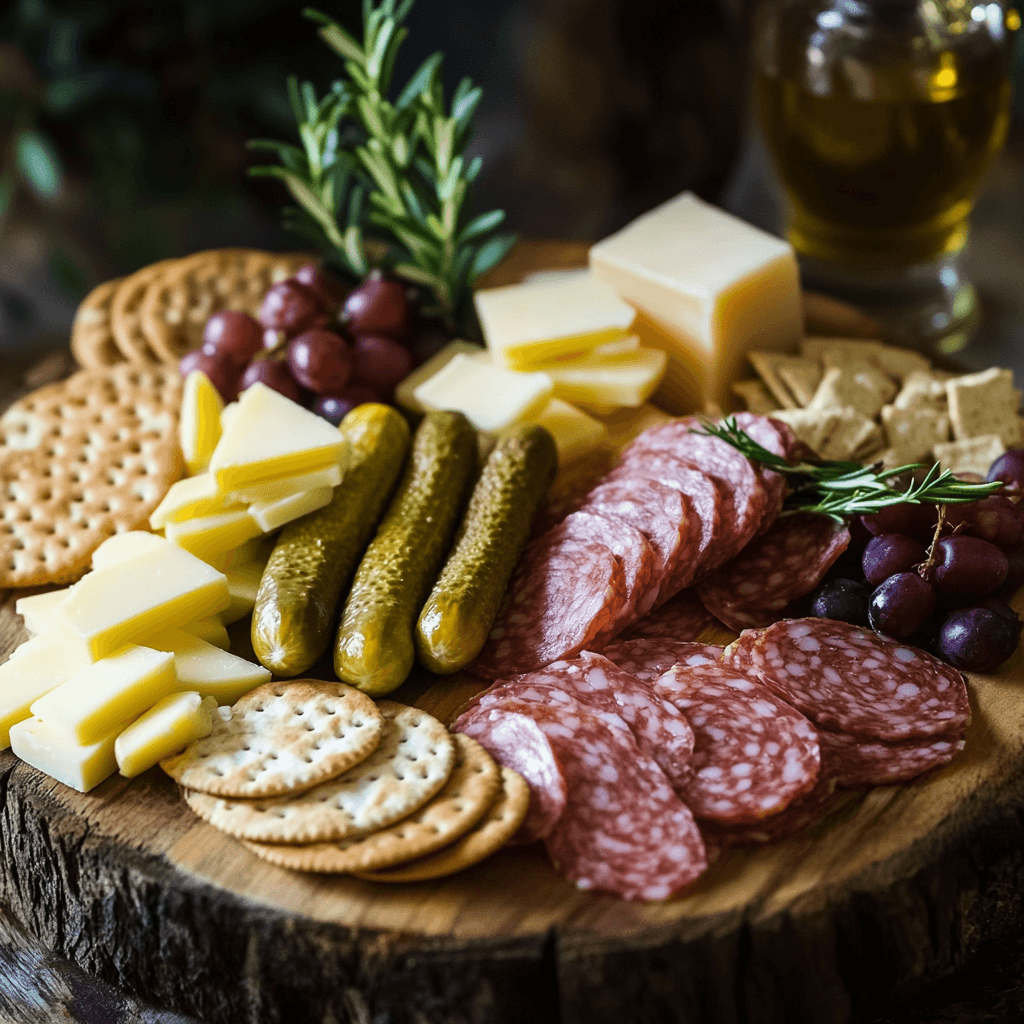
Where is Pickled Bologna Popular?
Pickled bologna is especially popular in certain regions of the United States, where it has become a staple snack in both casual and more formal settings. It’s a favorite in delis, local markets, and even gas stations, where people stop by for a quick bite on the go. The snack has deep roots in the Midwest but has spread across the country, with regional variations appearing along the way.
The Midwest: The Heart of Pickled Bologna
The Midwest is considered the heart of pickled bologna culture. In states like Ohio, Michigan, and Indiana, pickled bologna is commonly found in local shops and is often enjoyed at gatherings or as a snack with drinks. The region’s version of pickled bologna tends to have a bold, tangy flavor, with some recipes incorporating spicy elements for added zing. In these areas, it’s also common to find pickled bologna served alongside other pickled foods like pickled eggs and pickled cucumbers.
Pickled bologna has been a part of Midwestern food culture for generations, and it’s not hard to see why. It’s inexpensive, flavorful, and perfect for pairing with a cold beer. Whether at a summer picnic or during a cozy winter evening, pickled bologna is a comforting snack that brings people together.
The South: A Twist on Pickled Bologna
In the Southern United States, pickled bologna has its own twist. Southern recipes tend to include more spice, with additions like hot peppers, cayenne, and even jalapeños. This spicier variation gives the bologna an extra kick, which is perfect for those who enjoy bold, spicy flavors. Pickled bologna in the South is often served as part of a larger spread of appetizers, alongside other southern favorites like fried pickles and hushpuppies.
The Southern love for bold flavors and spices is evident in the way pickled bologna is made and enjoyed. Whether as a snack or as part of a larger meal, Southern pickled bologna is sure to satisfy anyone with a taste for heat.
Other Regions
While pickled bologna is most popular in the U.S., its influence can also be found in other countries with a pickling tradition. In Germany and Poland, pickled sausages are a popular snack, though they are not always made with bologna specifically. The tradition of pickling meats has spread throughout the world, and pickled bologna is just one of many examples of how different cultures have put their own spin on preserving food through pickling.
In addition to the U.S., pickled bologna can be found in specialty shops and markets around the world, allowing people from various countries to experience this unique snack.
To explore more about the art of pickling, check out our article on how to make pickled vegetables, where we dive deeper into the different methods of pickling and how they can be used with various meats and vegetables.
Pickled bologna is more than just a snack – it’s a flavorful, tangy delicacy with a rich history and a growing presence in various culinary cultures. Whether you’re familiar with this food or looking to explore it for the first time, this guide will take you through every aspect of pickled bologna, from its taste and the pickling process to how you can enjoy it in different dishes. The second part of this article will expand on how to make pickled bologna, serve it in creative ways, and answer the most common questions about it. Let’s continue where we left off and delve deeper into the delicious world of pickled bologna.
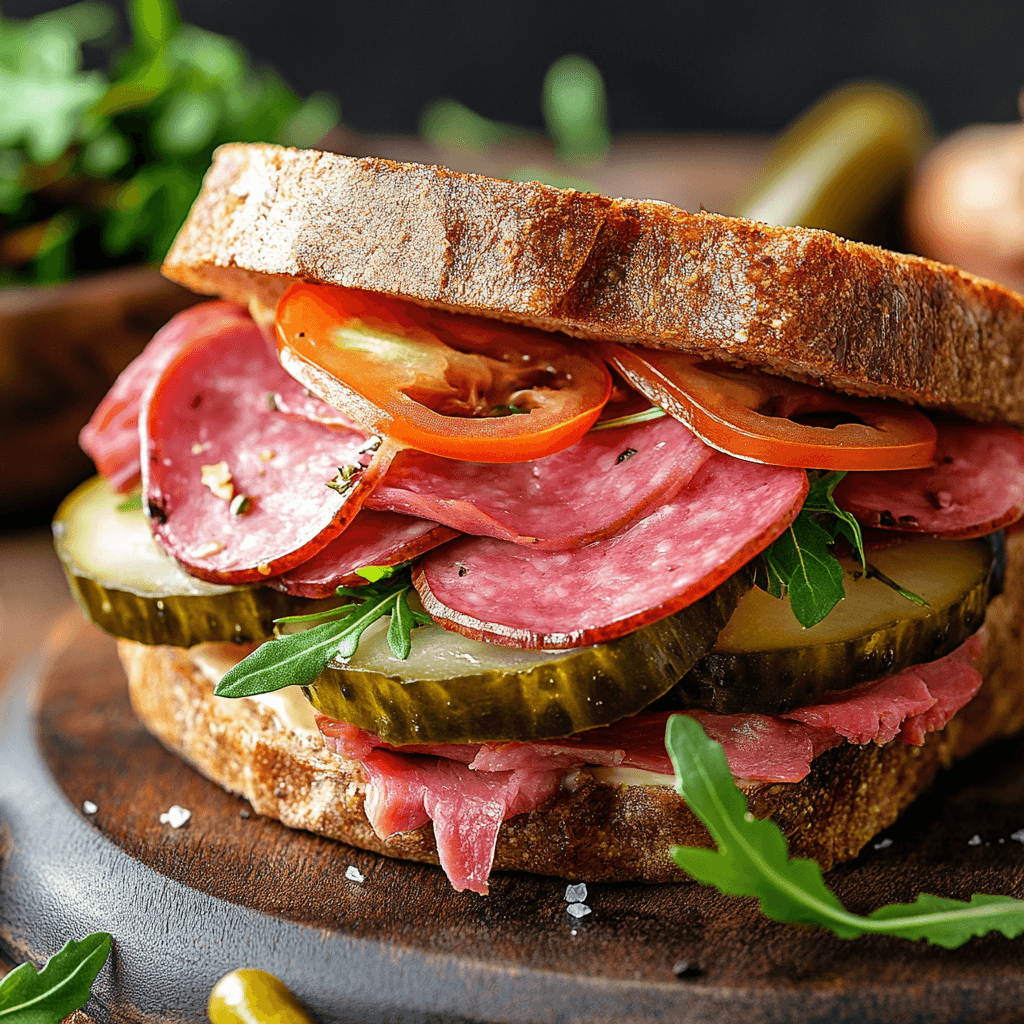
How to Make Your Own Pickled Bologna
Making pickled bologna at home is both a fun and rewarding process. It allows you to control the flavor, spice level, and texture of the bologna, ensuring you get a snack tailored exactly to your taste. Additionally, homemade pickled bologna can be fresher than store-bought varieties, and it’s perfect for sharing at gatherings or enjoying alone.
Step-by-Step Guide to Pickling Bologna
1. Prepare the Bologna
Start by cutting your bologna into thick slices—about 1/2 inch thick. This ensures the brine can penetrate the bologna properly, allowing it to absorb the flavors more evenly. The thickness can be adjusted depending on how much flavor you want the brine to impart. If you want to add a more intense flavor, you can even score the edges of the slices.
2. Create the Brine
The brine is where the magic happens, as it imparts the tangy, salty, and spicy flavors to the bologna. Start by combining equal parts water and vinegar in a saucepan. You can use white vinegar, apple cider vinegar, or even red wine vinegar for different flavor profiles. Add sugar to the mix—this balances out the tang of the vinegar. Then, add your spices: garlic cloves, mustard seeds, black peppercorns, and chili flakes are common choices. You can also throw in some sliced onions or bell peppers for added flavor. Bring the brine to a boil, stirring occasionally to dissolve the sugar and salt.
3. Submerge the Bologna
Once the brine is ready, let it cool to room temperature before pouring it over the bologna slices. You can pack the bologna into a clean glass jar, ensuring that the slices are tightly arranged to minimize air pockets. Pour the cooled brine over the bologna slices until they are fully submerged. If necessary, you can add more brine to cover them entirely.
4. Refrigerate and Let It Sit
The key to great pickled bologna is patience. Seal the jar tightly and place it in the refrigerator. Let it sit for at least 24 hours. If you prefer a more intense flavor, leave it for up to 48 hours. The longer it sits, the more pickled and flavorful the bologna becomes, as the brine continues to soak in.
5. Enjoy Your Pickled Bologna
After 24-48 hours, your pickled bologna is ready to be enjoyed! You can slice it into thin pieces and serve it as a snack, or get creative and incorporate it into sandwiches, salads, or charcuterie boards.
Common Mistakes to Avoid When Making Pickled Bologna
While making pickled bologna is relatively easy, there are a few common mistakes you should avoid:
- Not Enough Brine: If the bologna slices aren’t fully covered by the brine, they won’t pickle evenly. Make sure the brine completely submerges the bologna.
- Skipping the Cooling Step: Pouring hot brine directly over the bologna can alter the texture. Allow the brine to cool before sealing the jar.
- Rushing the Pickling Time: Pickled bologna needs time to marinate and develop its flavor. Don’t try to speed up the process by cutting corners.
By following these steps and avoiding these mistakes, you’ll have homemade pickled bologna that’s both tasty and flavorful.
Serving Suggestions and Creative Variations
Pickled bologna is a versatile snack that can be enjoyed in many ways. Whether you’re serving it at a party or preparing it for a weekday meal, there are plenty of ways to incorporate pickled bologna into your menu.
Classic Snack Pairings
Pickled bologna is delicious on its own or served with a few simple accompaniments. Pair it with crackers, a slice of cheese, and some olives or pickled cucumbers for a satisfying snack plate. The tanginess of the bologna complements the sharpness of the cheese, and the crunchy crackers add texture.
Pickled Bologna Sandwich
For a more filling meal, make a pickled bologna sandwich. Layer the bologna on your favorite bread, add some mustard or mayonnaise, and top with sliced pickles, lettuce, or onions. You can also try it on a toasted roll for a bit of crunch. A hearty sandwich made with pickled bologna is perfect for lunch or dinner.
Pickled Bologna Salad
Another creative way to enjoy pickled bologna is in a salad. Slice the bologna into thin strips and toss it into a simple salad of lettuce, tomatoes, cucumbers, and red onions. Drizzle with a vinaigrette or your favorite salad dressing. The bologna adds a tangy, savory element that makes the salad more interesting and satisfying.
Grilled Pickled Bologna
For a different twist, you can grill your pickled bologna. The high heat adds a crispy, charred texture on the outside while maintaining the bologna’s juicy interior. You can grill slices of bologna on a barbecue or in a grill pan. Serve it as a snack or as part of a barbecue spread with grilled vegetables and bread.
FAQs About Pickled Bologna
What Does Pickled Bologna Taste Like?
Pickled bologna has a complex flavor profile that combines tanginess, saltiness, and savory richness. The vinegar-based brine gives it a distinct sourness, while spices like mustard seeds, garlic, and pepper add depth and a hint of heat. The bologna itself provides a smooth, meaty texture that contrasts nicely with the sharp, crunchy brine.
Does Pickled Bologna Need to Be Refrigerated After Opening?
Yes, once you open a jar of pickled bologna, it should always be refrigerated. The cold helps maintain the flavor and texture and prevents any bacterial growth. Store it in the fridge and consume it within a few weeks for the best results.
How Long Does It Take to Pickle Bologna?
The pickling process typically takes 24 to 48 hours. The bologna will start absorbing the flavors of the brine after just a few hours, but if you leave it for 48 hours, the flavors will become more intense and developed.
Where is Pickled Bologna Popular?
Pickled bologna is most popular in the Midwest and Southern United States. It’s often found in local delis, corner stores, and specialty markets. It’s a snack that’s enjoyed by many as part of a meal or simply as a quick treat.
Can You Eat Pickled Bologna Straight from the Jar?
Yes, pickled bologna is often eaten directly from the jar. It’s a convenient and tasty snack that’s ready to eat as soon as you open the jar. It’s also great for adding to sandwiches, salads, or charcuterie boards.
How Do You Store Pickled Bologna Long-Term?
Pickled bologna can be stored in the refrigerator for several weeks. If you need to store it for a longer period, you can freeze it, but freezing may affect the texture. To preserve its freshness, it’s best to consume pickled bologna within a few weeks of opening.
Conclusion
Pickled bologna is a unique and flavorful snack that offers a combination of tanginess, saltiness, and savory richness. Whether you make it at home or buy it from a store, it’s a versatile food that can be enjoyed in a variety of ways—from simple snacks to creative dishes. By following the easy steps to make your own, you can enjoy pickled bologna at its freshest and most flavorful. Whether you prefer it straight from the jar, in a sandwich, or as part of a salad, pickled bologna is sure to become a favorite.
See more recipes in the lunch category

